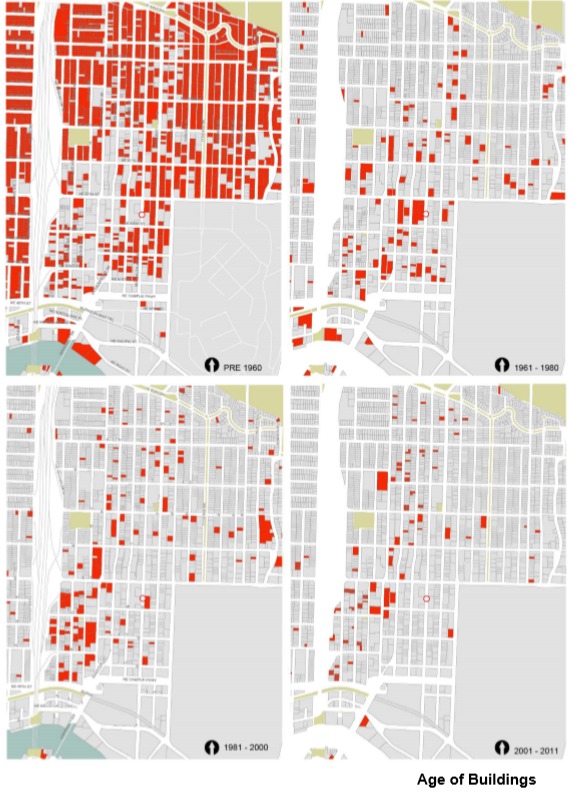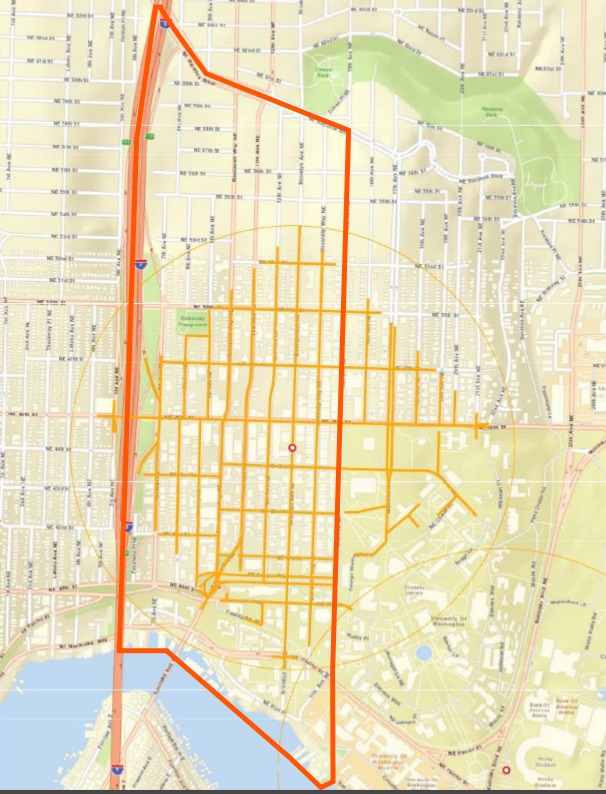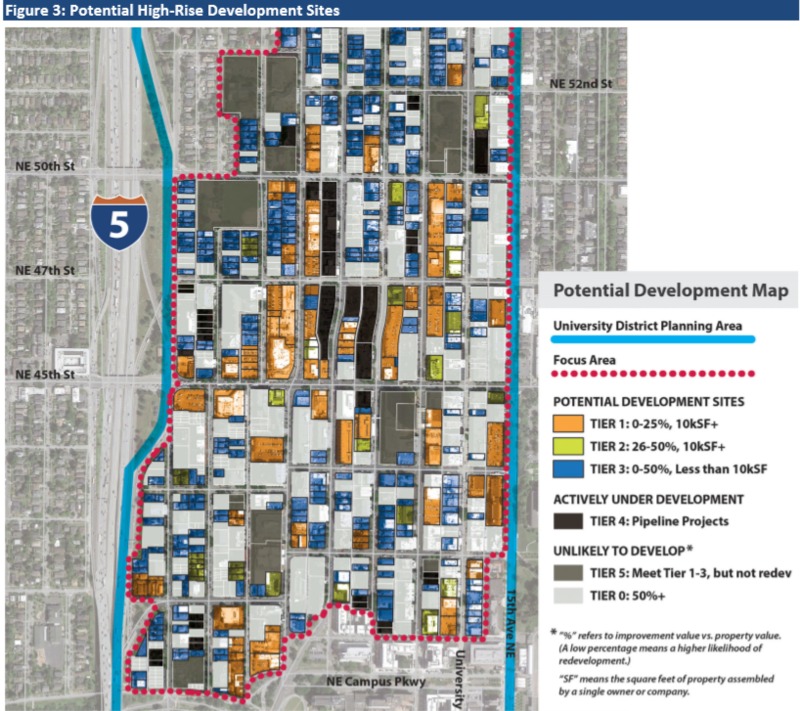Site Report 4

Located between 47th and 50th St. and 15th St. and University Way NE, the picture shows that this block has been a target of upzoning. 3/8/17. The Department of Planning and Development

This map shows the buildings that have survived the U District's urbanization. 3/8/17. The Department of Planning and Development.

This map shows the target area of change according to DPD. 3/8/17. The Department of Planning and Development.

Map showing the likelihood of areas in the U District that could be a target for upzoning. 3/8/17, City of Seattle DPD
The University District(U-District), located next to the University Of Washington(UW), is the hub of student life for nearly 40,000 students. The U-District offers products and services targeting these students and children. Services include programs for homeless children that house and feed children in need. The U-District has been growing quickly and isn’t planning on stopping anytime soon. Rent in the area has increased by 35% since 2013, the light rail expansion to U-District has been approved, and upzoning in the area has been approved.(Rent trend data in Seattle, Washington, 2017)
Radhika Nair and Susan Mclain in charge of the University District Urban Design Framework are in looking to address the features of what the future U-District will look like as the city and area continue to grow. History has shown that the U-District had been affected by the auto era where limited parking space and traffic has slowed the growth of the U-District. Similar to the auto era, the creation of Union Pacific and Milwaukee railroad systems in the early 1900s brought nearly 160,000 people towards Seattle, according to the Seattle archives. We can interpret this information in relation to the creation of more transportation into the U-District.
Design and architecture writer Barbara Eldredge wrote, “65 percent of Seattle land is zoned for single-family homes, preventing the development of more high-density apartment buildings.”
Eldredge also notes that Seattle has the highest amount of housing shortages in the U.S. The City of Seattle approved the upzoning of buildings in the U-District to a height of 320 ft. (The same height as UW Tower). This plan for upzoning the U-District is definitely necessary in order to fix the housing shortage problem Seattle faces. The Seattle Department of Planning and Development (DPD) researched whether the upzoning of the U-District was possible. Dated 2013, DPD created a memo that tells what people should take into account in the future development of the U-District. Some issues included a need for higher rent, better transportation options, a thriving commercial district, and the city to allow an upzoning of the area.
According to DPD, “Rents would need to increase approximately 20% from current mid‐rise rates for new high‐rise multifamily units to be feasible today.”(U‐District Urban Design Framework, 3)
The stars aligned for U-District's potential future growth. Huge increase in rent, the light rail extension, the popularity of the ave, and an approved upzoning bill is exactly what the DPD analyzed needed to happen in order for upzoning to be successful in the U-District. This upzoning has its flaws of demolishing 1,500 housing units, but the upzoning plan creates over 5,000 new housing units. Based on improvement value vs. property value graph(Figure 4) of the U-District and the already upzoning of apartments on the block between 47th and 50th St. and 15th St. and University Way NE, my researched block will unlikely be changed. It is also unlikely that the University Church will be affected since it’s been on 15th St. for over a hundred years.
The future of the U-District will continue to be a student-centered area. New housing units will likely to be filled by students and faculty from the UW. Businesses will continue to cater to student needs. There will likely be more student-centered activities in the area.
